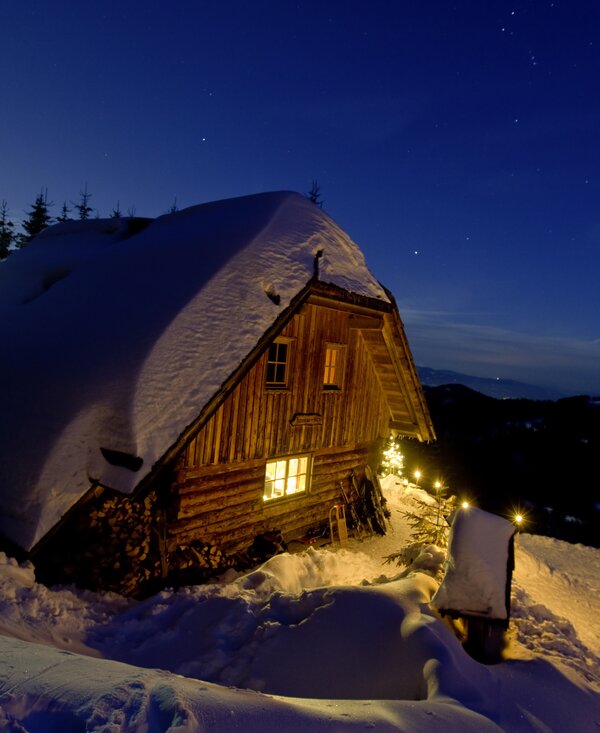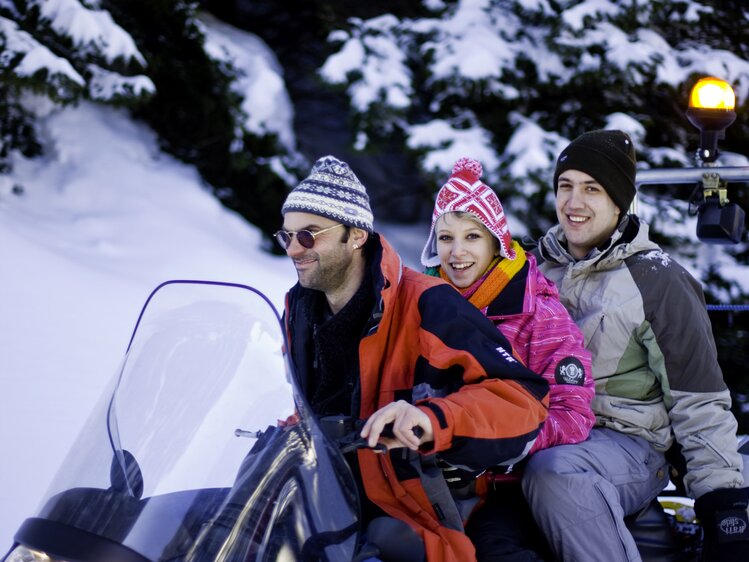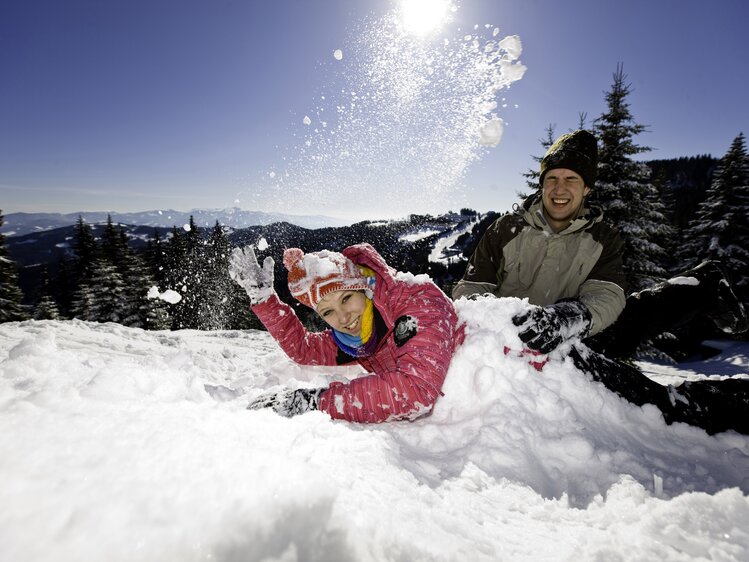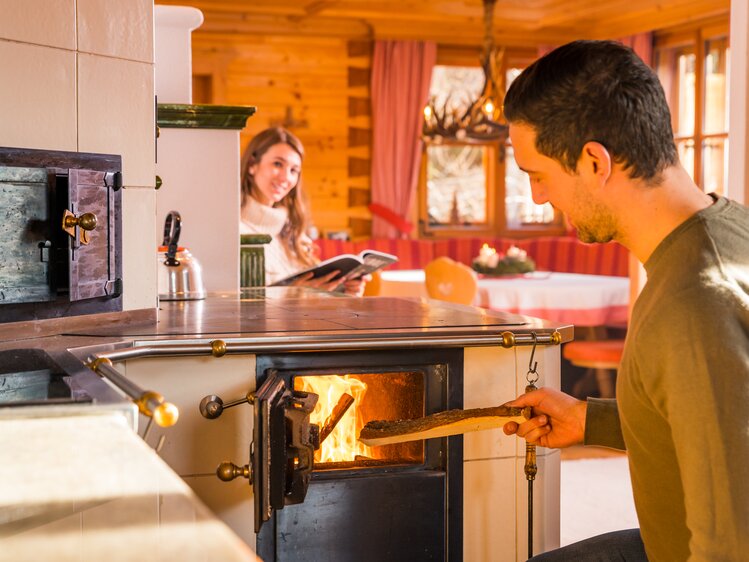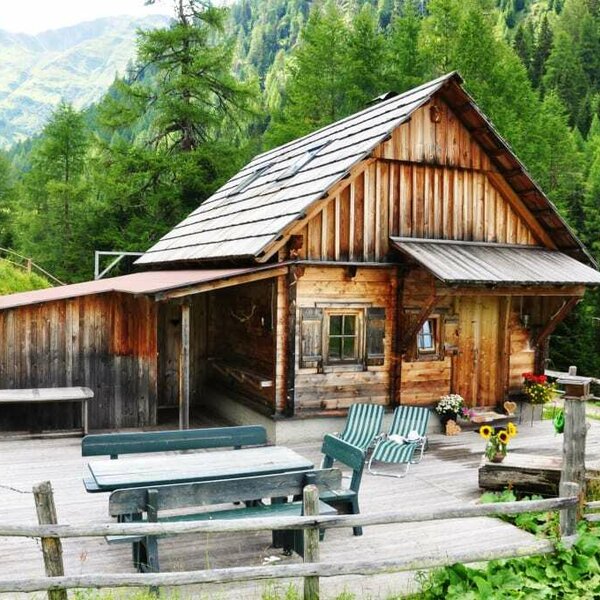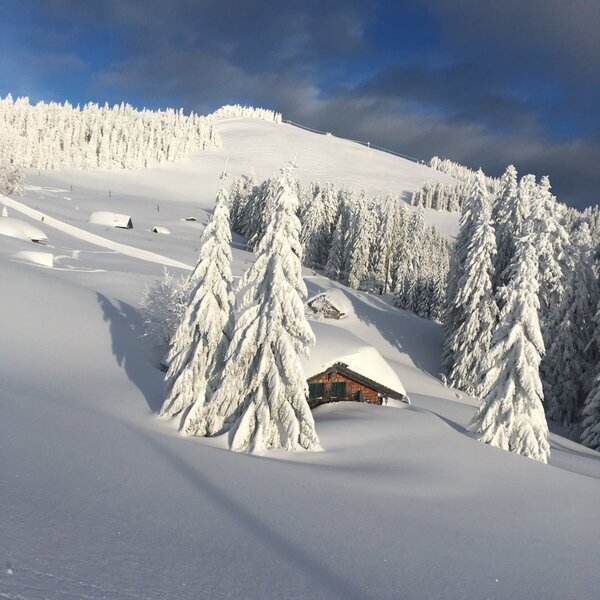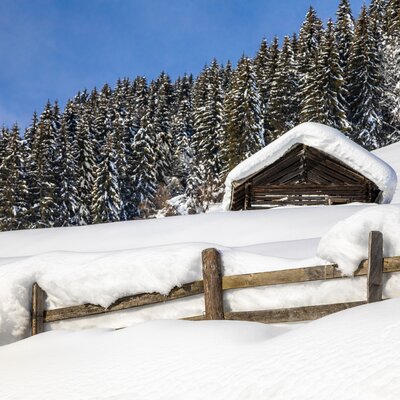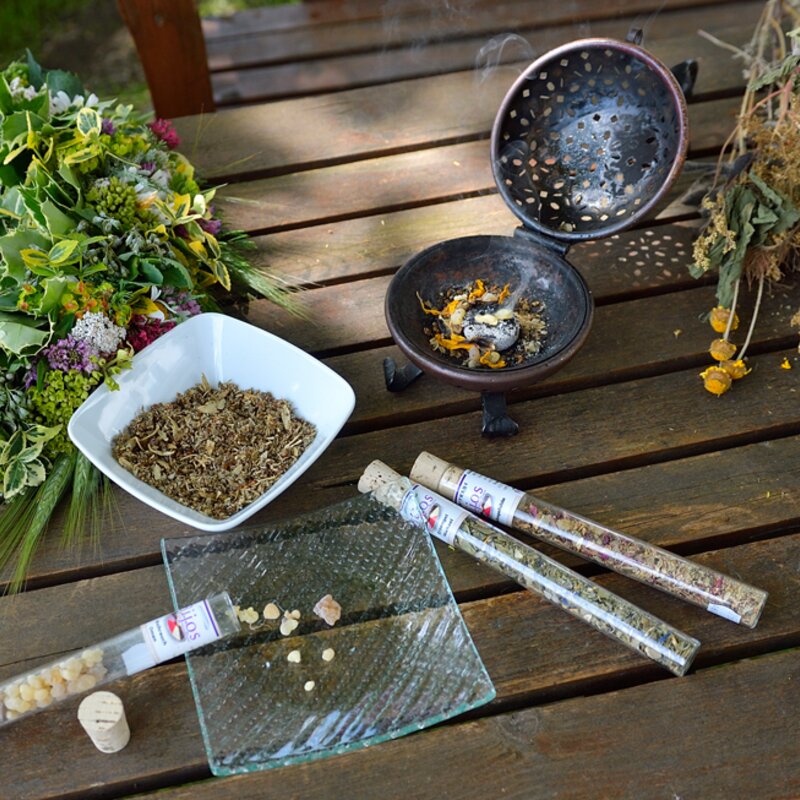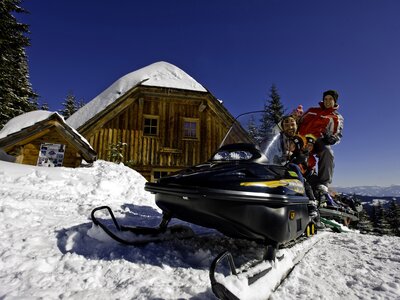
Michael knows his way around!Getting to the winter hut without a car
Today I have also asked an expert on the subject! Michael Münzer, a mare's milk farmer and dedicated alpine hut landlord, has been making his three alpine huts in the Klippitztörl ski area in Carinthia available to his guests for many years. He knows the difference between summer and winter rentals, so he knows exactly what he is talking about. Today we are only talking about winter.
Michael's huts, like many others, are not accessible by car in winter. You can get there on skis, but that's usually a luggage problem. That's why Michael has a skidoo with a trailer and whizzes guests and their luggage to their respective huts. He has a request that may seem strange at first glance: "Stow your luggage neatly, especially snow-safe. Don't throw any loose heads of lettuce or egg packets onto the trailer. I know you bought them at the last minute, but you don't want them flying at anyone's head on the skidoo, not to mention the fact that heavy snowfall and strong winds can quickly render the food unusable. The same goes for the head of lettuce on your rucksack on the foot journey."
Speaking of luggage: What you don't take with you to your winter hut is even harder to get to the hut than in summer. So, think as carefully as possible beforehand about what you absolutely need, what you don't need and what you don't need at all. The latter can be a surprising amount, but shouldn't stop you from taking warm clothing and good winter-proof footwear with you, not to mention ski equipment, which falls into the "essential" category. By the way: Cuddly toys for children and similar items can also fall into this category.
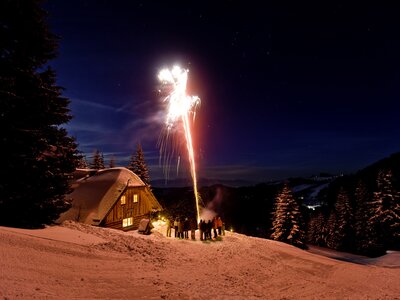
You need enough wood at the hutTips and tricks for heating up
Yes, it is cold in and around alpine huts in winter. And that's exactly why proper heating is a key issue for your winter vacation at the hut. Michael Münzer, himself a long-time hut landlord, puts it in a nutshell:
"I always ask guests to heat sensibly - nobody expects heating professionals, but a little common sense helps everyone."
What does that mean in concrete terms?
"Don't heat the hut so that it's 32 degrees inside, while outside the polar bear is tearing open the windows at -15 degrees."
"And please don't play in a summer T-shirt - winter hut means experiencing winter."
There is plenty of wood in every winter hut, the hut owners make sure of that. So nobody has to freeze. But: overheating is unhealthy, dangerous and anything but climate-friendly.
Daily routine with a fireplace - how it works:
How does heating work when you're outside during the day - skiing, tobogganing or winter hiking?
Michael has a tried and tested tip:
"Heat up properly in the morning. There's usually an early riser in the group who can step in as heating master. This keeps it pleasantly warm until the afternoon. In the evening, the heat is then gradually turned up - because experience shows that hut evenings in winter last longer and are particularly cozy."
Heating with responsibility - and please don't get carried away
I remember an old wooden hut, only accessible on foot. The guests - experienced ski tourers - heated up so much early in the morning that the hut wall overheated and caught fire. The hut burned down and nobody got there in time. Instead of an evening in the hut, there was an emergency descent. A drastic example, but a clear reminder: never turn the heat up to "full throttle", especially when you are leaving!
Fireworks at the hut? Only with caution!
Speaking of fire - what about firecrackers and fireworks at the Almhütte?
Michael says: "If it's allowed, I hope everyone has fun. But please: clean up the leftovers! No spark of magic justifies garbage on the mountain pasture."
Because what New Year's Eve guests leave behind can endanger grazing livestock, wild animals or dogs - and no, the alpine farmer cannot know where the party took place. The final cleaning does not include the collection of rocket stems. So: Enjoy the fireworks - but with consideration!
The golden tipInto the New Year on the mountain pasture!
Things are getting a little complicated today - it's all about laws, regulations, permits and the like. Here is the short version: In the local area, the use of pyrotechnic objects is prohibited all year round, although the respective mayor can approve exceptions. Outside the local area, the use of pyrotechnic articles is generally permitted, although this use is restricted, for example, by noise protection ordinances, an ordinance on the prevention of forest fires, the Aviation Act or the Nature Conservation Act, etc. (varies from state to state). (which vary from state to state).
If you want to be on the safe (legal) side, this means that you can set off fireworks on the mountain pasture: Find out in advance, preferably before you buy the rockets, which current regulations apply at which location. The municipality or district administrative authority is responsible for this. In practice, it is best to ask your alpine hut landlord, who will find out on the spot and pass on their information to you. In the best case scenario, you will be royally pleased with your fireworks!
Notburga Samrock
12 Article(s)
